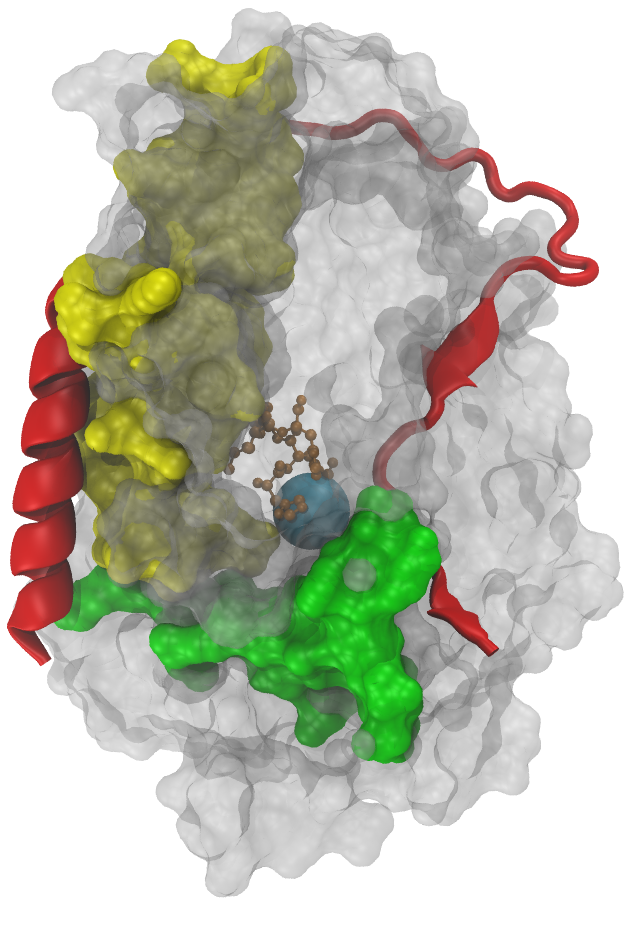Computational drug discovery¶
Enzyme-substrate complex of Botulinum neurotoxin light chain and SNAP-25¶
Botulinum neurotoxin (BoNT) is one of the most toxic proteins known to humankind and is a Class-A biothreat agent. BoNT has been used as an effective therapeutic drug against numerous neuromuscular disorders and for cosmetic purposes. The physiological basis underlying the BoNT’s-dreaded pathogenicity and therapeutic utility is its long lasting paralytic effects on muscles. Biochemically, this effect is caused by the extraordinary survival of the enzymatic domain of the toxin inside neuronal cells for up to an year.
Each of the seven serotypes of BoNT (A-G) is a 150 kDa protein, which consists of a 100 kDa heavy chain (HC) and a 50 kDa light chain (LC) linked together by a disulfide bond. Upon selective binding to the pre-synaptic nerves through HC, the toxin is internalized through endocytosis. Consequently, the BoNT LC is delivered into the cytosol where it blocks acetylcholine release at the nerve – muscle junctions. The biochemical step in blocking the neurotransmitter release involves the \(Zn^{2+}\)-endopeptidase activity of different BoNT LCs against a select group of neuronal proteins (SNAREs), which are critical for the exocytosis of the neurotransmitter. Despite the critical biological importance, the molecular basis of the long intracellular survival of BoNT is not understood.
Binding simulations of small inhibiting molecule to BoNT/A LC¶
We utilized Molecular Dynamic simulation in implicit solvent combined with rigid body Langevin Dynamics accellerated on GPU to simulate binding of a cyclic peptide (inhibitor) to BoNT/A LC. The simulations show the existence of two potential binding sites for the inhibitor and two possible mechanisms of how it may prevent substrate (SNAP-25) cleavage.
- Inhibitor binds to a grove of LC, then crawls down to active site. This will block a way for substrate to reach active site, where it can be cleaved.
- Inhibitor binds to C-terminal “tail” of the LC, then climb up to active site. Blocking active site prevent from substrate cleavage.
